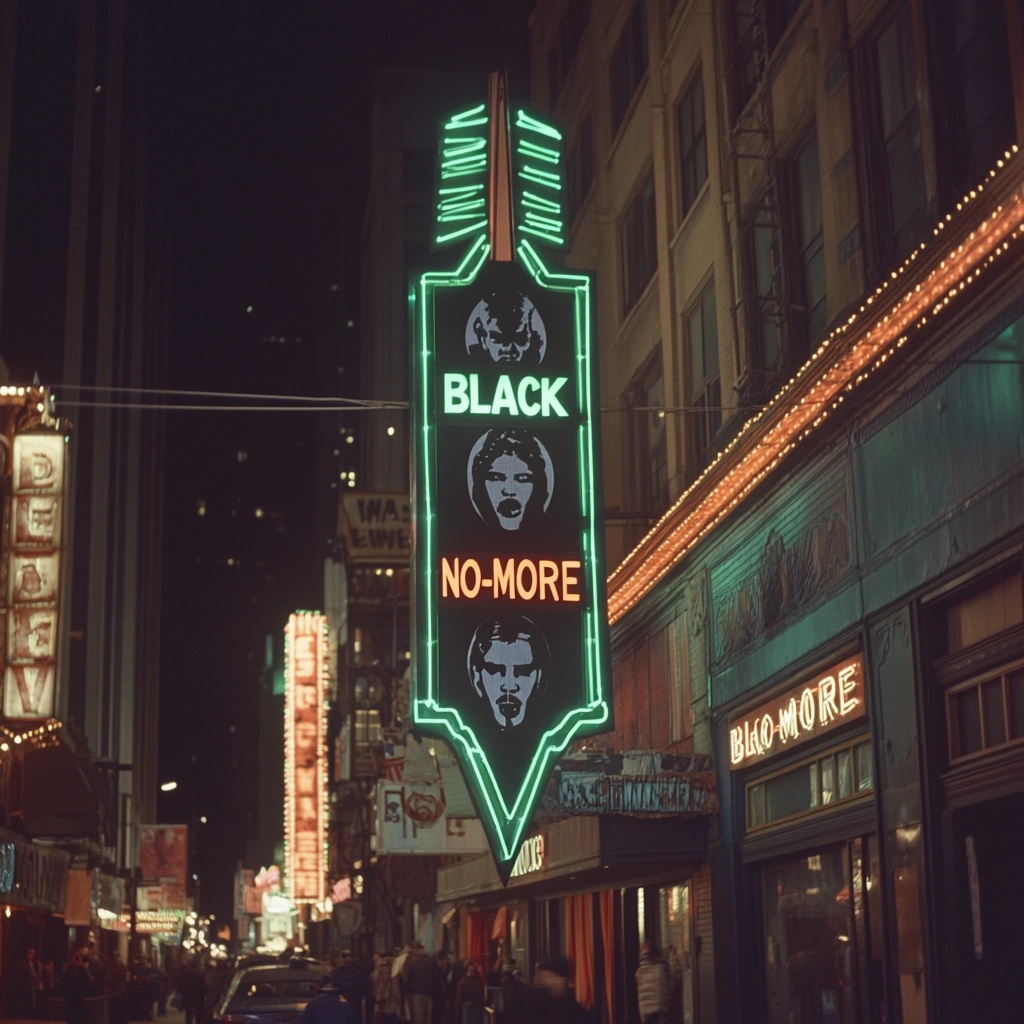BLACK NO MORE (4)
By:
June 26, 2025

George S. Schuyler’s Black No More: Being an Account of the Strange and Wonderful Workings of Science in the Land of the Free, A.D. 1933-1940 (1931) is a satire featuring the Invention of a transformative cosmetic treatment. HiLoBooks is pleased to serialize an excerpt for HILOBROW’s readers.
ALL INSTALLMENTS: 1 | 2 | 3 | 4 | 5.
The two friends strolled up the avenue. Both were rather mum. They had been inseparable pals since the stirring days in France. Now they were about to be parted. It wasn’t as if Max was going across the ocean to some foreign country; there would be a wider gulf separating them: the great sea of color. They both thought about it.
“I’ll be pretty lonesome without you, Bunny.”
“It ain’t you, Big Boy.”
“Well, why don’t you go ahead and get white and then we could stay together. I’ll give you the money.”
“Say not so! Where’d you get so much jack all of a sudden?” asked Bunny.
“Sold my story to The Scimitar for a grand.”
“Paid in full?”
“Wasn’t paid in part!”
“All right, then, I’ll take you up, Heavy Sugar.” Bunny held out his plump hand and Max handed him a hundred-dollar bill.
They were near the Crookman Sanitarium. Although it was five o’clock on a Sunday morning, the building was brightly lighted from cellar to roof and the hum of electric motors could be heard, low and powerful. A large electric sign hung from the roof to the second floor. It represented a huge arrow outlined in green with the words BLACK-NO-MORE running its full length vertically. A black face was depicted at the lower end of the arrow while at the top shone a white face to which the arrow was pointed. First would appear the outline of the arrow; then, BLACK-NO-MORE would flash on and off. Following that the black face would appear at the bottom and beginning at the lower end the long arrow with its lettering would appear progressively until its tip was reached, when the white face at the top would blazon forth. After that the sign would flash off and on and the process would be repeated.
In front of the sanitarium milled a half-frozen crowd of close to four thousand Negroes. A riot squad armed with rifles, machine guns and tear gas bombs maintained some semblance of order. A steel cable stretched from lamp post to lamp post the entire length of the block kept the struggling mass of humanity on the sidewalk and out of the path of the traffic. It seemed as if all Harlem were there. As the two friends reached the outskirts of the mob, an ambulance from the Harlem Hospital drove up and carried away two women who had been trampled upon.
Lined up from the door to the curb was a gang of tough special guards dredged out of the slums. Grim Irish from Hell’s Kitchen, rough Negroes from around 133rd Street and 5th Avenue (New York’s “Beale Street”) and tough Italians from the lower West Side. They managed with difficulty to keep an aisle cleared for incoming and outgoing patients. Near the curb were stationed the reporters and photographers.
The noise rose and fell. First there would be a low hum of voices. Steadily it would rise and rise in increasing volume as the speakers became more animated and reach its climax in a great animal-like roar as the big front door would open and a whitened Negro would emerge. Then the mass would surge forward to peer at and question the ersatz Nordic. Sometimes the ex-Ethiopian would quail before the mob and jump back into the building. Then the hardboiled guards would form a flying squad and hustle him to a waiting taxicab. Other erstwhile Aframericans issuing from the building would grin broadly, shake hands with friends and relatives and start to graphically describe their experience while the Negroes around them enviously admired their clear white skins.
In between these appearances the hot dog and peanut vendors did a brisk trade, along with the numerous pickpockets of the district. One slender, anemic, ratty-looking mulatto Negro was almost beaten to death by a gigantic black laundress whose purse he had snatched. A Negro selling hot roasted sweet potatoes did a land-office business while the neighboring saloons, that had increased so rapidly in number since the enactment of the Volstead Law that many of their Italian proprietors paid substantial income taxes, sold scores of gallons of incredibly atrocious hootch.
“Well, bye, bye, Max,” said Bunny, extending his hand. “I’m goin’ in an’ try my luck.”
“So long, Bunny. See you in Atlanta. Write me general delivery.”
“Why, ain’t you gonna wait for me, Max?”
“Naw! I’m fed up on this town.”
“Oh, you ain’t kiddin’ me, Big Boy. I know you want to look up that broad you saw in the Honky Tonk New Year’s Eve,” Bunny beamed.
Max grinned and blushed slightly. They shook hands and parted. Bunny ran up the aisle from the curb, opened the sanitarium door and without turning around, disappeared within.
RADIUM AGE PROTO-SF: “Radium Age” is Josh Glenn’s name for the nascent sf genre’s c. 1900–1935 era, a period which saw the discovery of radioactivity, i.e., the revelation that matter itself is constantly in movement — a fitting metaphor for the first decades of the 20th century, during which old scientific, religious, political, and social certainties were shattered. More info here.
SERIALIZED BY HILOBOOKS: James Parker’s Cocky the Fox | Annalee Newitz’s “The Great Oxygen Race” | Matthew Battles’s “Imago” | & many more original and reissued novels and stories.
